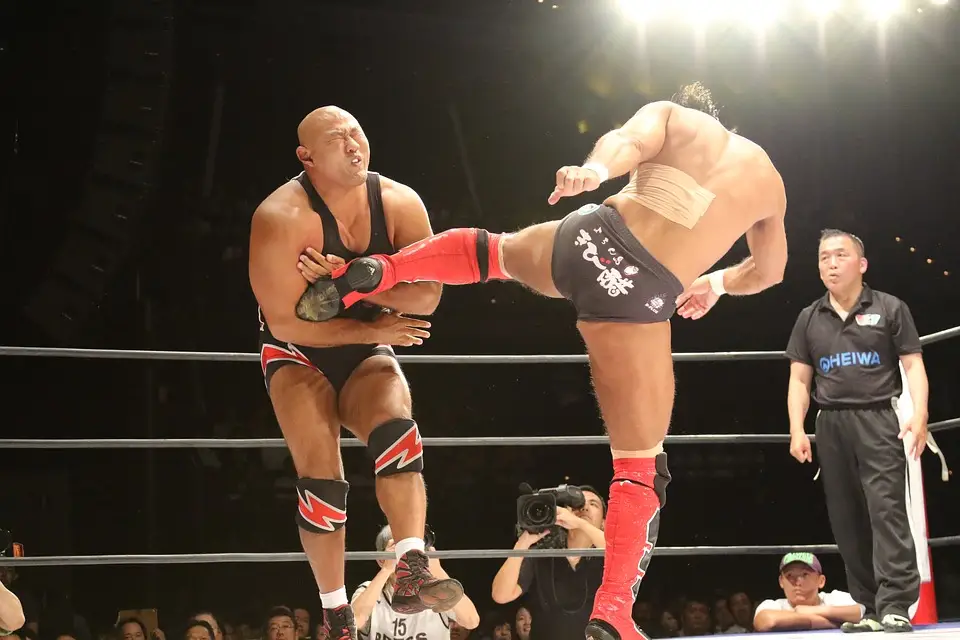
Professional wrestling is a century-old performing art that deftly combines athleticism, drama, intrigues, and contemporary pop-culture sensibilities to captivate the masses in the context of a sporting event. And although pro wrestling events are staged, all the physicality that you see is real. Just like stunt performers, professional wrestlers execute athleticism feats, fly from the ring ropes, and even collide with each other— all while remaining in character.
This begs the question; Do professional wrestlers actually get injuries?
In this article, we’re going to try and answer whether professional wrestlers get real injuries, and if so, what are the most common injuries.
Keep reading to find out about all that.
When visiting a dentist, you need to prepare yourself mentally to undergo the painful drilling experience, the dentist’s experience notwithstanding. Likewise, no matter how experienced a professional wrestler is, they can still pick injuries occasionally.
In fact, if you’re an ardent WWE follower, you may well be aware that Stone Cold Steve Austin and Edge prematurely ended their careers due to an extended history of injuries.
But before we look at the most common injuries in pro wrestling, it’s important to mention one thing. Despite the scripted nature of wrestling, spectators the world over are also raking in huge sums by wagering on their favorite characters through online gambling platforms. If you have a favorite MMA wrestler, you can start by reading this Fortunejack casino review & bonus code.
Now back to where we started… common pro wrestling injuries.
Top 6 Common Pro Wrestling Injuries
#1: Knee Ligament Tears and Sprains
There’s no denying that wrestling is a demanding sport. It entails a lot of athleticism compounded with unconventional twisting of the body, which causes knee ligament sprains and tears. The most common ligament injuries in the realm of professional wrestling include medial collateral ligament sprains and anterior cruciate ligament tears. Although it’s possible to recover from these injuries, more serious tears and sprains can pose a persistent risk in the long run.
If you are a professional wrestler, you can prevent knee ligament injuries by participating in strength and isolated training exercises to strengthen your ligaments and any other connective tissues. You can also try stretching before and after a match to relax the ligaments.
#2: Cauliflower Ear
Basically, a cauliflower ear is an ear deformity that is caused by blunt trauma. Wrestlers are constantly rubbing heads against each other and hitting their ears. As a result of this sustained trauma, small blood clots start forming in the ear lobes giving them a cauliflower appearance.
Fortunately, you can avoid this injury by wearing the right gear to protect your head and ears.
#3: Prepatellar Bursitis Injuries
Constant trauma, overuse, and gradual wear of the kneecap due to wrestling activities can cause it to swell, ultimately leading to prepatellar bursitis. Two of the most common symptoms of prepatellar bursitis are swelling and sharp pain on the knee cap, which can interfere with your leg movements when wrestling.
To avoid developing prepatellar bursitis, you need to use knee pads to prevent trauma and cushion the patella against any impact. If you are already experiencing inflammation or swelling on the patella, you can try resting, compression, icing, elevation, and even anti-inflammatory medications.
#4: Shoulder Dislocations
Restrictive holds, unconventional torso and arm twists, and impact with the mat are the leading causes of shoulder dislocations in pro wrestling. The most common shoulder injuries include sublux, whereby the humeral head partially disengages the shoulder socket or shoulder dislocations, whereby the humeral head completely dislodges from the socket. Likewise, shoulder dislocations also cause connective ligaments and tendon tears.
One of the best ways to keep shoulder dislocations at bay is to engage in strength and flexibility training.
#5: Concussions
According to a report published by the American Journal of Sports Medicine, concussions are more common in wrestling compared to any other sport out there. A good example of documented concussions in professional wrestling includes Mick Foley in the famous WrestleMania match against Edge, as well as the WrestleMania match between Undertaker and Brock Lesnar.
Although there’s little that a wrestler can do on a personal level to prevent such an injury, wrestling has begun implementing preventative measures by banning certain high-risk moves and holds like the “reverse lift”, whereby an opponent is hurled backward on the mat.
#6: Skin Infections
Contact sports are mostly associated with Staphylococcus aureus infections. Pro wrestlers, in particular, face unique risks associated with skin infections including sharing facilities, locker rooms, and frequent skin-to-skin contact, which increases the risk of transmitting the diseases. Worse still, the Staph bacteria can survive on surfaces for weeks, meaning the skin infection can quickly spread from one team member to the other.
To avoid this, you need to bring a pair of clean clothes for practice sessions, sanitize surfaces, and take showers before and after matches and practice.
Final Thoughts
Professional wrestling is undoubtedly a physically demanding sport. As such, injuries are quite common, and they come in all shapes and forms. If you’re a professional wrestler, we hope that our article will help you discern the most commonly occurring injuries, as well as how you can avoid or minimize their effects. Just like any other physical sport, it may not be possible to avoid such injuries. In such a scenario, you need to step back and let the injury heal, albeit, under the guidance of a professional medical practitioner. Ignoring such an injury is not only dangerous but could also worsen as time goes by.

















